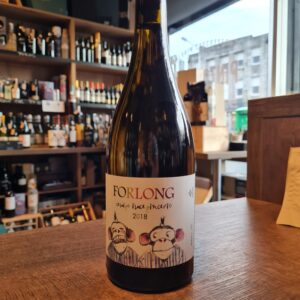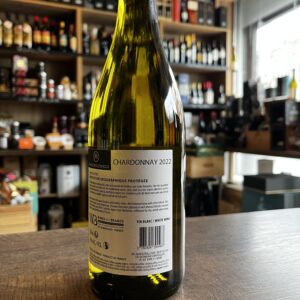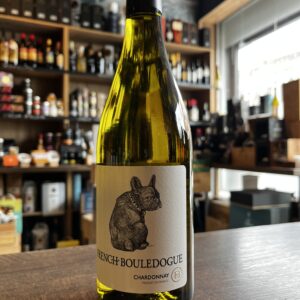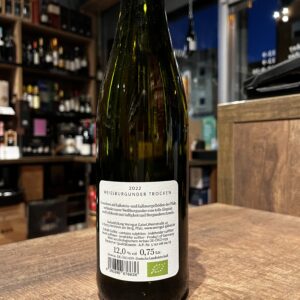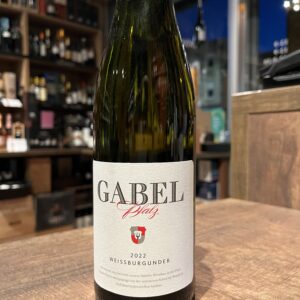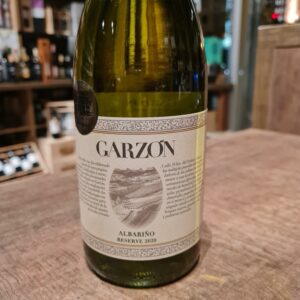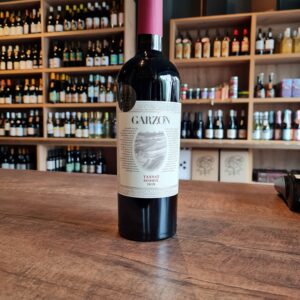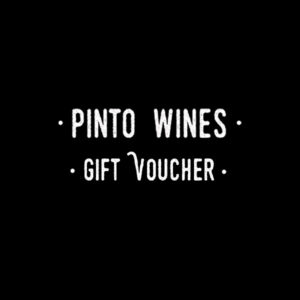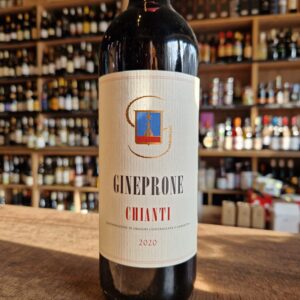-
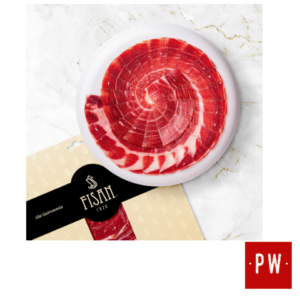 One of FISAN’s most prized products in a practical format to delight your palate with the most extraordinary nuances of 100% Iberico Bellota Ham Alta Gastronomia at any time and place. Its secret: the selection from the earliest stage of the best pure Iberico breed pigs, patience and curing in our natural cellars in Guijuelo, which leads to the best Pata Negra Ham you will ever remember. Only the most exceptional pieces qualify as Alta Gastronomia.
One of FISAN’s most prized products in a practical format to delight your palate with the most extraordinary nuances of 100% Iberico Bellota Ham Alta Gastronomia at any time and place. Its secret: the selection from the earliest stage of the best pure Iberico breed pigs, patience and curing in our natural cellars in Guijuelo, which leads to the best Pata Negra Ham you will ever remember. Only the most exceptional pieces qualify as Alta Gastronomia. -
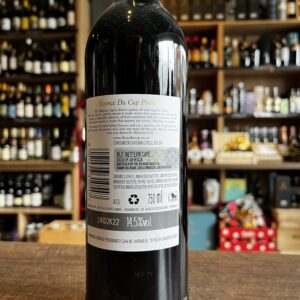
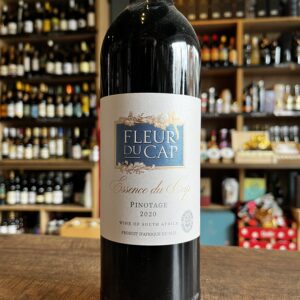 The Fleur du Cap approach is unconstrained. Using only meticulously selected grapes from the finest vineyards across the Cape Winelands, the winery produces a range of wines that offer diversity of choice and diversity of taste. Essence du Cap is known for exceptional quality and wines that express their true varietal character. The grapes were selected from four different vineyard blocks situated around the Bottelary Hills, which were planted in 1987, 1994, 1996 and 1997. Two of the vineyards are bush vines and the remaining trellised. The soils consist of deep decomposed shale (bush vines) and granite (trellised vines), with good water retention. Yields for the bush vines were 6 to 8 t/ha and the trellised vineyards 10 to 12 t/ha. Supplementary irrigation was given during the latter stages of the season to ensure full ripening. Pest and disease control is implemented according to South African subjective IPW standards. This wine is an ideal accompaniment to grilled lamb and poultry, pork roasts and game fish. It is perfect with classic Cape cuisine like Bobotie and Malay Curries, as well as spicy Mexican food.
The Fleur du Cap approach is unconstrained. Using only meticulously selected grapes from the finest vineyards across the Cape Winelands, the winery produces a range of wines that offer diversity of choice and diversity of taste. Essence du Cap is known for exceptional quality and wines that express their true varietal character. The grapes were selected from four different vineyard blocks situated around the Bottelary Hills, which were planted in 1987, 1994, 1996 and 1997. Two of the vineyards are bush vines and the remaining trellised. The soils consist of deep decomposed shale (bush vines) and granite (trellised vines), with good water retention. Yields for the bush vines were 6 to 8 t/ha and the trellised vineyards 10 to 12 t/ha. Supplementary irrigation was given during the latter stages of the season to ensure full ripening. Pest and disease control is implemented according to South African subjective IPW standards. This wine is an ideal accompaniment to grilled lamb and poultry, pork roasts and game fish. It is perfect with classic Cape cuisine like Bobotie and Malay Curries, as well as spicy Mexican food. -
Out of stock
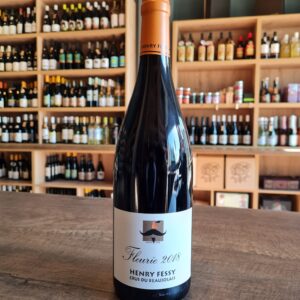 Lying on homogeneous soils of pink granite containing large crystals, Fleurie is often regarded as the ''Queen of Beaujolais'' with their vines averaging 50 years old. The wines are characterized by great finesse and elegance with floral aromas of irises and violets. An elegant and delicate wine. Lovely paired with roasted chicken, grilled meats and semi-cured cheeses
Lying on homogeneous soils of pink granite containing large crystals, Fleurie is often regarded as the ''Queen of Beaujolais'' with their vines averaging 50 years old. The wines are characterized by great finesse and elegance with floral aromas of irises and violets. An elegant and delicate wine. Lovely paired with roasted chicken, grilled meats and semi-cured cheeses -
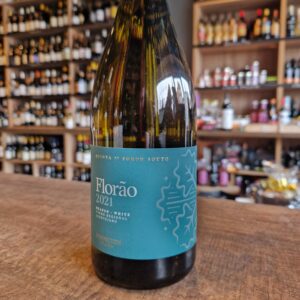 Quinta da Fonte Souto is in the Portalegre subregion of the Alto Alentejo in southern Portugal. Close to the São Mamede range (1,025 metres), the property benefits from the area’s altitude with its cooler microclimate in sharp contrast to the Alentejo region’s typically hot and dry conditions. Yields are low due to the schist and granite soils, which are less fertile than those found in the flat and rolling terrain which characterizes the majority of the Alentejo.
Quinta da Fonte Souto is in the Portalegre subregion of the Alto Alentejo in southern Portugal. Close to the São Mamede range (1,025 metres), the property benefits from the area’s altitude with its cooler microclimate in sharp contrast to the Alentejo region’s typically hot and dry conditions. Yields are low due to the schist and granite soils, which are less fertile than those found in the flat and rolling terrain which characterizes the majority of the Alentejo. -
Out of stock
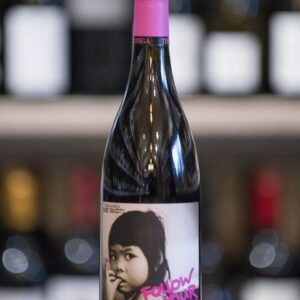 Craig and Carla Hawkins launched Testalonga in the north of Swartland, South Africa in 2008. They are part of a revolutionary ground swell taking place in South African wine, where traditions are being challenged and brave new territory is being explored. The painfully small amount of wine that this duo produces gets snapped up in short order the world over. Known for their striking intensity and nervy energy, Craig and Carla's wines are on the cutting edge of the natural wine movement in their country.This is the lightest, daintiest version of Carignan one could imagine. It's got more in common with, say a Jura rouge or something Cab-Franc-like out of the Loire Valley than a classic Rhone red.It's fresh, racy, filled with character and seasoned with a little wildness. Great with on summer afternoon, first courses, seasoned vegetables. Enjoy
Craig and Carla Hawkins launched Testalonga in the north of Swartland, South Africa in 2008. They are part of a revolutionary ground swell taking place in South African wine, where traditions are being challenged and brave new territory is being explored. The painfully small amount of wine that this duo produces gets snapped up in short order the world over. Known for their striking intensity and nervy energy, Craig and Carla's wines are on the cutting edge of the natural wine movement in their country.This is the lightest, daintiest version of Carignan one could imagine. It's got more in common with, say a Jura rouge or something Cab-Franc-like out of the Loire Valley than a classic Rhone red.It's fresh, racy, filled with character and seasoned with a little wildness. Great with on summer afternoon, first courses, seasoned vegetables. Enjoy -
Out of stock
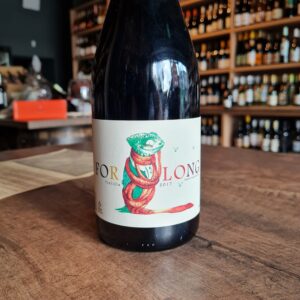 Fourth project of Bodegas Forlong (Cádiz). Vineyard consists of albariza soils in the Pago de “el Forlon” in Balbaina Baja, located in the coastal area of Puerto de Santa Maria, 7 km from the sea. Takes advantage of the proximity of the sea, and the purity of the albariza, as well as the local salt-peters which impart saline, chalky character to the grapes. The Tintilla de Rota grape, a native variety of the area, already existed on the farm along with the rest of the grapes, but they did not give it any value at the beginning, to the point that the first year they even gave it away. Once they discovered its potential "we almost pulled our hair at the thought that we had been giving it away." Has limited production of 2700 Bottles. As it is a native variety, they wanted to reflect it in some way on the label, and what better way than to put a native animal like the chameleon, which needs albariza soils that are easy to move to bury its eggs. Their long and rolled tongue is a reflection of Rocío and Alejandro's adventure of "rolling the blanket over their heads" when making a quality organic wine with Tintilla de Rota. Its vinification is carried out in clay jars, thus being a different wine. Pair it with entrecote steak, slow-cooked lamb, suckling pig, BBQ and grilled meats, porcini mushrooms, Jerusalem artichokes, hard cheeses, olives, jamón de pata negra.
Fourth project of Bodegas Forlong (Cádiz). Vineyard consists of albariza soils in the Pago de “el Forlon” in Balbaina Baja, located in the coastal area of Puerto de Santa Maria, 7 km from the sea. Takes advantage of the proximity of the sea, and the purity of the albariza, as well as the local salt-peters which impart saline, chalky character to the grapes. The Tintilla de Rota grape, a native variety of the area, already existed on the farm along with the rest of the grapes, but they did not give it any value at the beginning, to the point that the first year they even gave it away. Once they discovered its potential "we almost pulled our hair at the thought that we had been giving it away." Has limited production of 2700 Bottles. As it is a native variety, they wanted to reflect it in some way on the label, and what better way than to put a native animal like the chameleon, which needs albariza soils that are easy to move to bury its eggs. Their long and rolled tongue is a reflection of Rocío and Alejandro's adventure of "rolling the blanket over their heads" when making a quality organic wine with Tintilla de Rota. Its vinification is carried out in clay jars, thus being a different wine. Pair it with entrecote steak, slow-cooked lamb, suckling pig, BBQ and grilled meats, porcini mushrooms, Jerusalem artichokes, hard cheeses, olives, jamón de pata negra. -
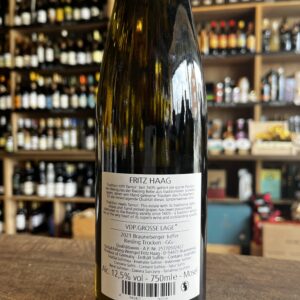
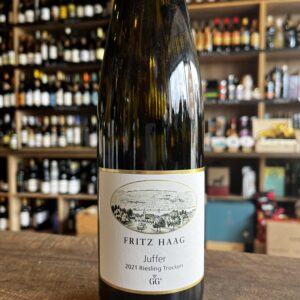 The historic Fritz Haag wine estate is located in the heart of the central Mosel River Valley. The earliest documentation of the estate dates back to 1605. At that time, the village in which it is situated was known as “Dusemond.” In 1925, this village was renamed “Brauneberg” (“brown mountain,” a reference to the color of the slate soil in this area of the Mosel) in an endeavor to further promote the reputation of its world-renowned vineyards “Brauneberger Juffer” and “Brauneberger Juffer Sonnenuhr.” Like all the top Mosel producers, Fritz Haag produces a range of wines including some very rich, late harvest dessert wines. These wines put the region on the map for luxury wine in the 17 and 1800s, making some Mosel Riesling more pricey and coveted than first growth Bordeaux. But in truth the wines that the locals drank, especially in the summer, were generally off dry to completely bone dry. Fritz Haag's vineyards sit along the slopes of the Brauneberger hill and the vineyards of Juffer and Juffer Sonnenuhr. Brauneberger faces almost entirely south which makes it a bit easier to get fully ripe Riesling in the classically cold, wet Mosel. That has changed a bit recently of course, but this is still a prized site for wines that perfectly balance finesse and power, complexity and airy drinkability. This specific wine is a VDP GG or Grosse Lage which is equivalent to a Grand Cru.
The historic Fritz Haag wine estate is located in the heart of the central Mosel River Valley. The earliest documentation of the estate dates back to 1605. At that time, the village in which it is situated was known as “Dusemond.” In 1925, this village was renamed “Brauneberg” (“brown mountain,” a reference to the color of the slate soil in this area of the Mosel) in an endeavor to further promote the reputation of its world-renowned vineyards “Brauneberger Juffer” and “Brauneberger Juffer Sonnenuhr.” Like all the top Mosel producers, Fritz Haag produces a range of wines including some very rich, late harvest dessert wines. These wines put the region on the map for luxury wine in the 17 and 1800s, making some Mosel Riesling more pricey and coveted than first growth Bordeaux. But in truth the wines that the locals drank, especially in the summer, were generally off dry to completely bone dry. Fritz Haag's vineyards sit along the slopes of the Brauneberger hill and the vineyards of Juffer and Juffer Sonnenuhr. Brauneberger faces almost entirely south which makes it a bit easier to get fully ripe Riesling in the classically cold, wet Mosel. That has changed a bit recently of course, but this is still a prized site for wines that perfectly balance finesse and power, complexity and airy drinkability. This specific wine is a VDP GG or Grosse Lage which is equivalent to a Grand Cru. -
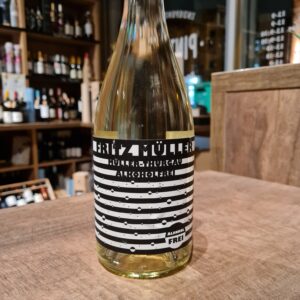 Non-alcoholic wine born in 2009 from a bubbly guy with old roots and modern tastes. Invariably well-dressed, he captures the world’s attention with his ranges of Non-Alcoholic wines in Frizzante style. Guido Walter and Jürgen Hofmann put their heads together. The German answer to frizzante had to be fresh and fruity, uncomplicated and affordable. A semi-sparkling wine that begins a carefree evening and lets you continue dancing late into the night. What began as an experimental small edition soon spread its wings and took flight. Suddenly it could be found at every party and could be seen winning design awards and notes of good taste. Everyone wants Fritz Müller. Refreshing, fizzy and frivolous: completely uncomplicated, the non-alcoholic Fritz Müller offers light-footed fun and fruity enjoyment. Vinified from the same grapes as the Fritz Müller semi-sparkling wine, this version entices sipping one or two glasses more without regret the next day. Wonderfully pure, it is best enjoyed chilled to 8°C, or as an ingredient in virgin cocktails. Guilt-free wine ;)
Non-alcoholic wine born in 2009 from a bubbly guy with old roots and modern tastes. Invariably well-dressed, he captures the world’s attention with his ranges of Non-Alcoholic wines in Frizzante style. Guido Walter and Jürgen Hofmann put their heads together. The German answer to frizzante had to be fresh and fruity, uncomplicated and affordable. A semi-sparkling wine that begins a carefree evening and lets you continue dancing late into the night. What began as an experimental small edition soon spread its wings and took flight. Suddenly it could be found at every party and could be seen winning design awards and notes of good taste. Everyone wants Fritz Müller. Refreshing, fizzy and frivolous: completely uncomplicated, the non-alcoholic Fritz Müller offers light-footed fun and fruity enjoyment. Vinified from the same grapes as the Fritz Müller semi-sparkling wine, this version entices sipping one or two glasses more without regret the next day. Wonderfully pure, it is best enjoyed chilled to 8°C, or as an ingredient in virgin cocktails. Guilt-free wine ;) -
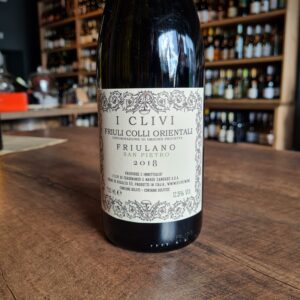 The wines of i Clivi are born in Friuli in between the Collio Goriziano and the eastern hills of Udine, named Colli Orientali, where, on sunny slopes – clivi meaning “slopes” – Altogether there is cultivated 12 hectares of certified organic vineyards planted with the indigenous varieties Ribolla, Friulano, Verduzzo, and Malvasia, whose only international grape is Merlot, a variety which found home in this area more than a century ago. Taking care of this important heritage of old vines, aged between 60 and 80 years, it is for Ferdinando and Mario Zanusso a reminder of the responsibility with which they guard and produce wine on this strip of land, giving the chance to express two distinct D.O.C. denominations, Collio, and Colli Orientali del Friuli, whose sensory difference is related exclusively to the microclimate. The low yields produced by these old vines give a natural concentration and complexity to the fruit they seek to transform naturally with spontaneous fermentation, maintaining the elegance and aromatic integrity through careful maturation in steel tanks for 50,000 bottles of varietal wines with great personality, distinguished grace, and delicacy.
The wines of i Clivi are born in Friuli in between the Collio Goriziano and the eastern hills of Udine, named Colli Orientali, where, on sunny slopes – clivi meaning “slopes” – Altogether there is cultivated 12 hectares of certified organic vineyards planted with the indigenous varieties Ribolla, Friulano, Verduzzo, and Malvasia, whose only international grape is Merlot, a variety which found home in this area more than a century ago. Taking care of this important heritage of old vines, aged between 60 and 80 years, it is for Ferdinando and Mario Zanusso a reminder of the responsibility with which they guard and produce wine on this strip of land, giving the chance to express two distinct D.O.C. denominations, Collio, and Colli Orientali del Friuli, whose sensory difference is related exclusively to the microclimate. The low yields produced by these old vines give a natural concentration and complexity to the fruit they seek to transform naturally with spontaneous fermentation, maintaining the elegance and aromatic integrity through careful maturation in steel tanks for 50,000 bottles of varietal wines with great personality, distinguished grace, and delicacy. -
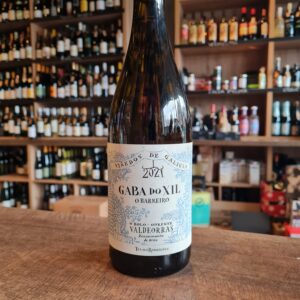 This slinky, mineral white hails from Valdeorras (“Valley of Gold”) in eastern Galicia, a region once famous for goldmining and now best known for its unique and complex wines made from the indigenous Godello grape. The wine is named for the river Sil that flows through the region (Xil is its ancient name, used by the Celtic people who once inhabited the area). Many of the river’s tributaries are flanked on either side by vineyards, planted in terraces on steep slate hillsides. The label displays a dozen bridges, symbolizing the idea of crossing from one vineyard plot to another. Gaba do Xil Godello is produced partially from grapes that are partially estate-grown and partially sourced from long-term suppliers. They come from 4 plots (O Val Grande, O Rasedo, A Torgueira, and O Valverde) located near the Bibei tributary, close to the town of Santa Cruz. Dotted with chestnut trees mixed with rockrose, the old granitic terraces barely have enough space to squeeze in the odd row of vines, following the folds of the mountains that plunge into the river. The vines grow in shallow, stony granite soils on terraces facing south, west and northwest. These coarse soils are low fertility and have low water retention capacity, forcing the vines to struggle and limiting yields. This Godello, is unoaked, gentle, restrained and precise which is dry and soft with a touch of godello's distinctive minerally citrus fruit, absoloutly perfect with light sea food dishes. Excellent value
This slinky, mineral white hails from Valdeorras (“Valley of Gold”) in eastern Galicia, a region once famous for goldmining and now best known for its unique and complex wines made from the indigenous Godello grape. The wine is named for the river Sil that flows through the region (Xil is its ancient name, used by the Celtic people who once inhabited the area). Many of the river’s tributaries are flanked on either side by vineyards, planted in terraces on steep slate hillsides. The label displays a dozen bridges, symbolizing the idea of crossing from one vineyard plot to another. Gaba do Xil Godello is produced partially from grapes that are partially estate-grown and partially sourced from long-term suppliers. They come from 4 plots (O Val Grande, O Rasedo, A Torgueira, and O Valverde) located near the Bibei tributary, close to the town of Santa Cruz. Dotted with chestnut trees mixed with rockrose, the old granitic terraces barely have enough space to squeeze in the odd row of vines, following the folds of the mountains that plunge into the river. The vines grow in shallow, stony granite soils on terraces facing south, west and northwest. These coarse soils are low fertility and have low water retention capacity, forcing the vines to struggle and limiting yields. This Godello, is unoaked, gentle, restrained and precise which is dry and soft with a touch of godello's distinctive minerally citrus fruit, absoloutly perfect with light sea food dishes. Excellent value -
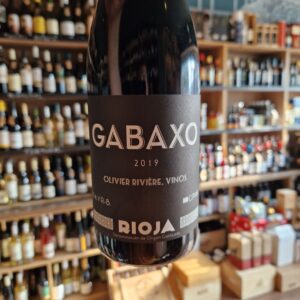
Rioja Gabaxo Olivier Riviere Biodynamic Wine, Wild yeast, French oak Maturation, full bodied but beautifully fresh and balanced. No new oak in Gabacho, but loads of classy Rioja character and sheer drinkability! Gabacho does see some wood, a small amount of old french barrels are used for ageing up to a year. This adds no flavour but helps to soften the wine slightly. This really is lovely stuff, rich but very fresh and balanced red wine with a touch of the dark and brooding about it and a touch of the animal too. It benefits from decanting and also from good bottle ageing. Try it, it will change your mind about Rioja
-
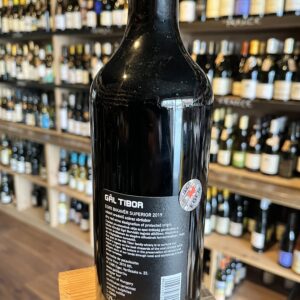
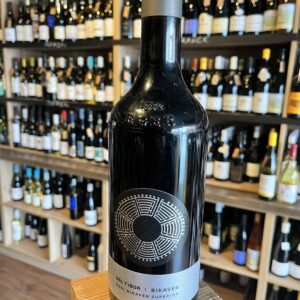 The 1552 Siege of Eger became an emblem of Hungarian heroism when the castle was successfully defended against the united forces of the two greatest Ottoman troops. When accounted for the defeat of their 20-fold army, the Ottoman leaders claimed the Hungarians - including women - fought with such an unparalleled courage they must have had drank the bull’s blood. This gave the name to the region’s emblematic red blend, Egri Bikavér (bull’s blood of Eger). Every bottle is embossed with “1552 Eger". This wine is the truest representation of the legendary Egri Bikavér. Cool climate, volcanic soil with the combination of the best sites in Eger give rise to the fresh, spicy, ripe, vibrant fruits with a touch of leafiness from firm but well integrated, round tannins. Let it explode untamed out of a slightly chilled bottle. The founder of the winery, Tibor Gál was asked by none other than Ludovico Antinori himself to join Ornellaia in 1989 where he soon became the chief winemaker. One of his greatest achievements was the 1998 Ornellaia which was voted best wine in the world by Wine Spectator in 2001. Meanwhile Marchese Incisa della Rocchetta, the man behind Sassicaia, partnered with Gál and together they founded their winery in Eger. Tibor Gál jnr. is in charge today with no less talent. His Bikavér blends are the most honest representations of the volcanic terroir of Eger. Vibrancy, elegance and finesse define the identity of all his wines. I am sure his dad would have been extremely proud to have seen his son become the pioneer of a new era of Egri Bikavér.
The 1552 Siege of Eger became an emblem of Hungarian heroism when the castle was successfully defended against the united forces of the two greatest Ottoman troops. When accounted for the defeat of their 20-fold army, the Ottoman leaders claimed the Hungarians - including women - fought with such an unparalleled courage they must have had drank the bull’s blood. This gave the name to the region’s emblematic red blend, Egri Bikavér (bull’s blood of Eger). Every bottle is embossed with “1552 Eger". This wine is the truest representation of the legendary Egri Bikavér. Cool climate, volcanic soil with the combination of the best sites in Eger give rise to the fresh, spicy, ripe, vibrant fruits with a touch of leafiness from firm but well integrated, round tannins. Let it explode untamed out of a slightly chilled bottle. The founder of the winery, Tibor Gál was asked by none other than Ludovico Antinori himself to join Ornellaia in 1989 where he soon became the chief winemaker. One of his greatest achievements was the 1998 Ornellaia which was voted best wine in the world by Wine Spectator in 2001. Meanwhile Marchese Incisa della Rocchetta, the man behind Sassicaia, partnered with Gál and together they founded their winery in Eger. Tibor Gál jnr. is in charge today with no less talent. His Bikavér blends are the most honest representations of the volcanic terroir of Eger. Vibrancy, elegance and finesse define the identity of all his wines. I am sure his dad would have been extremely proud to have seen his son become the pioneer of a new era of Egri Bikavér. -
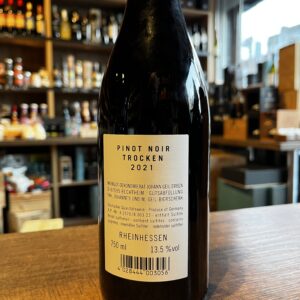
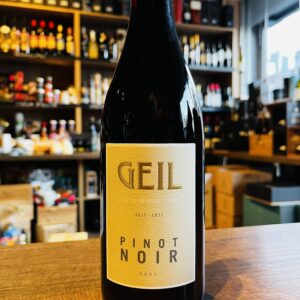 Weingut J. Geil is a winery making approachable, quaffable wines, all along the lines of greatly respecting the nature. This reflects in quality of their fruit and subsequently in their wines. Awarded many trophies each year, Weingut Geil belongs among some of the top German producers. There is nothing to be take lightly about their Pinot Noir, a serious, serious wine. Beautifully earthy and soft, with plenty of ripe wild berries. Excellent balance and considerable length. Accessible and juicy, yet wholeheartedly deep genuinely expressing the terroir of Bechtheim
Weingut J. Geil is a winery making approachable, quaffable wines, all along the lines of greatly respecting the nature. This reflects in quality of their fruit and subsequently in their wines. Awarded many trophies each year, Weingut Geil belongs among some of the top German producers. There is nothing to be take lightly about their Pinot Noir, a serious, serious wine. Beautifully earthy and soft, with plenty of ripe wild berries. Excellent balance and considerable length. Accessible and juicy, yet wholeheartedly deep genuinely expressing the terroir of Bechtheim -
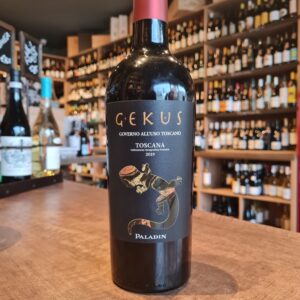 There are many ways in which to fall in love with Tuscany, not the least of which is through the region’s wonderful wines—or its landscape, its people, its food, and its art. Paladin's example of Super Tuscan wines comes in this form. A local take on the classic Bordeaux-style blend of Cabernet Sauvignon, Merlot, and Syrah (and sometimes Cabernet Franc), these wines were developed, in part, as a reaction to the restrictive regulations in Tuscany during the 1970s. At the time they emerged, they were considered some of the region’s best reds. Yet, somewhat ironically, they were technically table wine. In 1994, their Vino da Tavola (VdT) status was elevated to the Indicazione Geografica Tipica (IGT) denomination, which officially endowed these non-traditional wines with a premium quality rating just below the Denominazione di Origine Controllata (DOC), which at that time was reserved for more traditional regional wines. The tonneau used at Paladin hold 2 to 3,000 litters. Very impressive if you compare the barrels with a normal barrique barrel. Even though Gekus is only aged for 3 months, the body that it has is quite pronounced and it is indicative of the extraction done with the grapes. The bottle itself already shows through its weight that we are about to encounter something phenomenal, something heavy, something Super. The palate is complex and you can feel the residual sugar without it being sweet to a point of being unpleasant. Recommended with red meat, it is traditionally very popular with pici (thick spaghetti) with meat sauce. Serve at room temperature.
There are many ways in which to fall in love with Tuscany, not the least of which is through the region’s wonderful wines—or its landscape, its people, its food, and its art. Paladin's example of Super Tuscan wines comes in this form. A local take on the classic Bordeaux-style blend of Cabernet Sauvignon, Merlot, and Syrah (and sometimes Cabernet Franc), these wines were developed, in part, as a reaction to the restrictive regulations in Tuscany during the 1970s. At the time they emerged, they were considered some of the region’s best reds. Yet, somewhat ironically, they were technically table wine. In 1994, their Vino da Tavola (VdT) status was elevated to the Indicazione Geografica Tipica (IGT) denomination, which officially endowed these non-traditional wines with a premium quality rating just below the Denominazione di Origine Controllata (DOC), which at that time was reserved for more traditional regional wines. The tonneau used at Paladin hold 2 to 3,000 litters. Very impressive if you compare the barrels with a normal barrique barrel. Even though Gekus is only aged for 3 months, the body that it has is quite pronounced and it is indicative of the extraction done with the grapes. The bottle itself already shows through its weight that we are about to encounter something phenomenal, something heavy, something Super. The palate is complex and you can feel the residual sugar without it being sweet to a point of being unpleasant. Recommended with red meat, it is traditionally very popular with pici (thick spaghetti) with meat sauce. Serve at room temperature. -
Out of stock
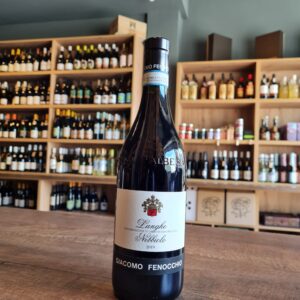 Since 1864, five generations of the Fenocchio family have been producing wine in the heart of Barolo - most of them born in the same yellow house in Monforte d’Alba, at the top of a hillside covered in Nebbiolo grapes. Claudio Fenocchio took upon his father teachings and instead of modernazing the Barolo winemaking techniques, he and with the support of his brothers decided to keep the tradition and build on it. Fenocchio has not taken up organic or biodynamic farming methods but, on the other hand, the estate never took to chemical fertilisers or herbicides, so diverse ground cover and natural predators protect the vines, which grow at their own pace. And in the winery, fermentation is similarly driven by nature and the local microflora. Technically, Claudio has found a way of producing wines which have approachable fruit when young, yet built around a strong tannic structure which does not overwhelm early on, but encourages the development of the wine over years. It is partly due to some green harvesting and careful selection, partly due to enzymatic reaction (ironically) during the long fermentation, which melds the fruit and tannin seamlessly. Barolos are aged for five months in stainless Slovenian oak and a further year in the bottle before release. steel, two years in Slovenian oak and a further year in the bottle before release. More than defining itself as traditional or modern Barolo, Giacomo Fenocchio wine is an expression of terroir.
Since 1864, five generations of the Fenocchio family have been producing wine in the heart of Barolo - most of them born in the same yellow house in Monforte d’Alba, at the top of a hillside covered in Nebbiolo grapes. Claudio Fenocchio took upon his father teachings and instead of modernazing the Barolo winemaking techniques, he and with the support of his brothers decided to keep the tradition and build on it. Fenocchio has not taken up organic or biodynamic farming methods but, on the other hand, the estate never took to chemical fertilisers or herbicides, so diverse ground cover and natural predators protect the vines, which grow at their own pace. And in the winery, fermentation is similarly driven by nature and the local microflora. Technically, Claudio has found a way of producing wines which have approachable fruit when young, yet built around a strong tannic structure which does not overwhelm early on, but encourages the development of the wine over years. It is partly due to some green harvesting and careful selection, partly due to enzymatic reaction (ironically) during the long fermentation, which melds the fruit and tannin seamlessly. Barolos are aged for five months in stainless Slovenian oak and a further year in the bottle before release. steel, two years in Slovenian oak and a further year in the bottle before release. More than defining itself as traditional or modern Barolo, Giacomo Fenocchio wine is an expression of terroir. -
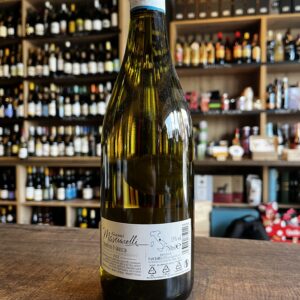
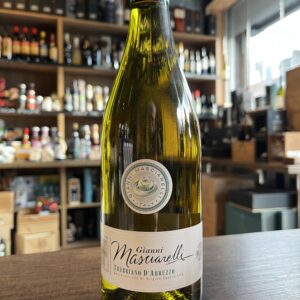 The Gianni’s Selection is born from an extraordinary idea of Gianni Masciarelli and his continuous pursuit for excellence also outside of the national borders. By interpreting his vision, Marina Cvetic continues to enrich the range, to offer Masciarelli partners an increasingly complete offer, suitable to any convivial occasion.
The Gianni’s Selection is born from an extraordinary idea of Gianni Masciarelli and his continuous pursuit for excellence also outside of the national borders. By interpreting his vision, Marina Cvetic continues to enrich the range, to offer Masciarelli partners an increasingly complete offer, suitable to any convivial occasion. -
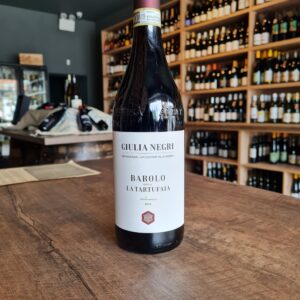 Giulia Negri is a young talent that goes by the nickname "Barolo girl" in the wine world. The grapes for this archetype of a modern-traditional Barolo come from the top vineyards Brunate and Serradenari, the latter is located at an altitude of up to 520 m, and the soils are clayey-sandy. It is an area with a particularly cool and breezy microclimate, which is reflected in the elegant profile of the wines. Climbing towards the top of the hill, the soils become increasingly rich in sandy veins and limestone marl, which contribute to giving Barolo an extreme expressive refinement. The high quality grapes, a work in the cellar that is very respectful of the raw material and aimed at enhancing the typical characteristics of the terroir, allow the creation of a Barolo faithful to the land of origin. Dressed to impress, savory red with a fine fragrance on the palate that doesn't deny its origin and the grape variety, it is of an almost unique elegance and freshness that allows it to be identified as a lively and completely complete top wine even when young. Further years of maturity are certainly not a mistake, because one feels impressively how the complexity increasing with the age joins the finesse and elegance already unmistakable today. One bottle for now and don't put the rest too far away in the cellar, please!
Giulia Negri is a young talent that goes by the nickname "Barolo girl" in the wine world. The grapes for this archetype of a modern-traditional Barolo come from the top vineyards Brunate and Serradenari, the latter is located at an altitude of up to 520 m, and the soils are clayey-sandy. It is an area with a particularly cool and breezy microclimate, which is reflected in the elegant profile of the wines. Climbing towards the top of the hill, the soils become increasingly rich in sandy veins and limestone marl, which contribute to giving Barolo an extreme expressive refinement. The high quality grapes, a work in the cellar that is very respectful of the raw material and aimed at enhancing the typical characteristics of the terroir, allow the creation of a Barolo faithful to the land of origin. Dressed to impress, savory red with a fine fragrance on the palate that doesn't deny its origin and the grape variety, it is of an almost unique elegance and freshness that allows it to be identified as a lively and completely complete top wine even when young. Further years of maturity are certainly not a mistake, because one feels impressively how the complexity increasing with the age joins the finesse and elegance already unmistakable today. One bottle for now and don't put the rest too far away in the cellar, please!


